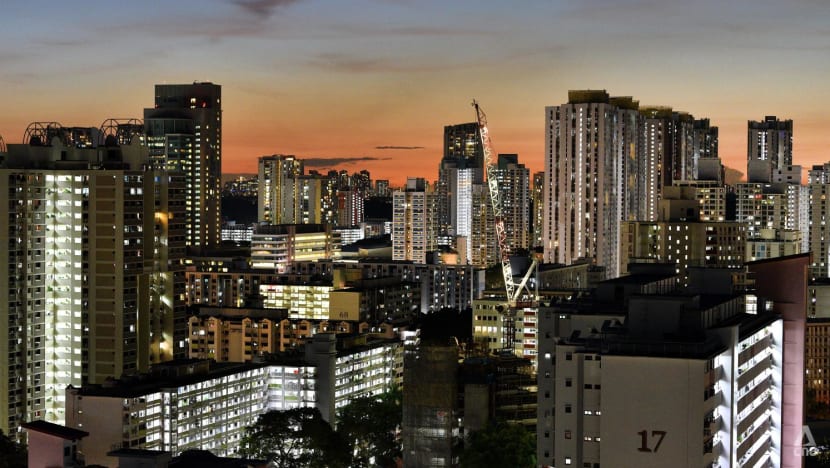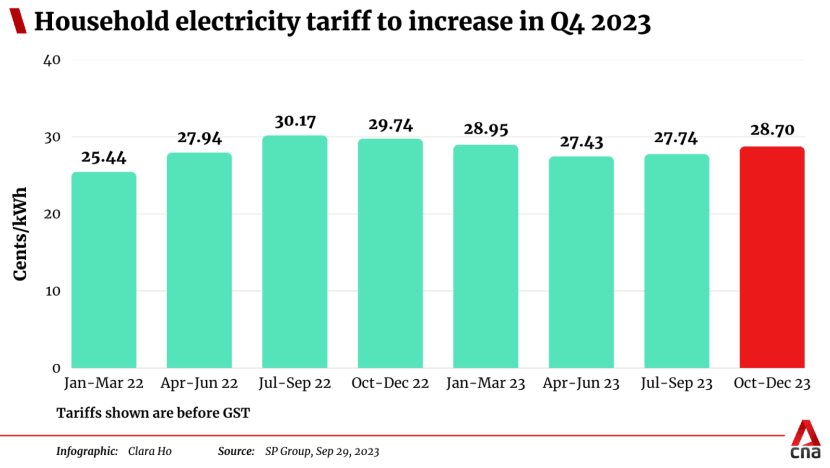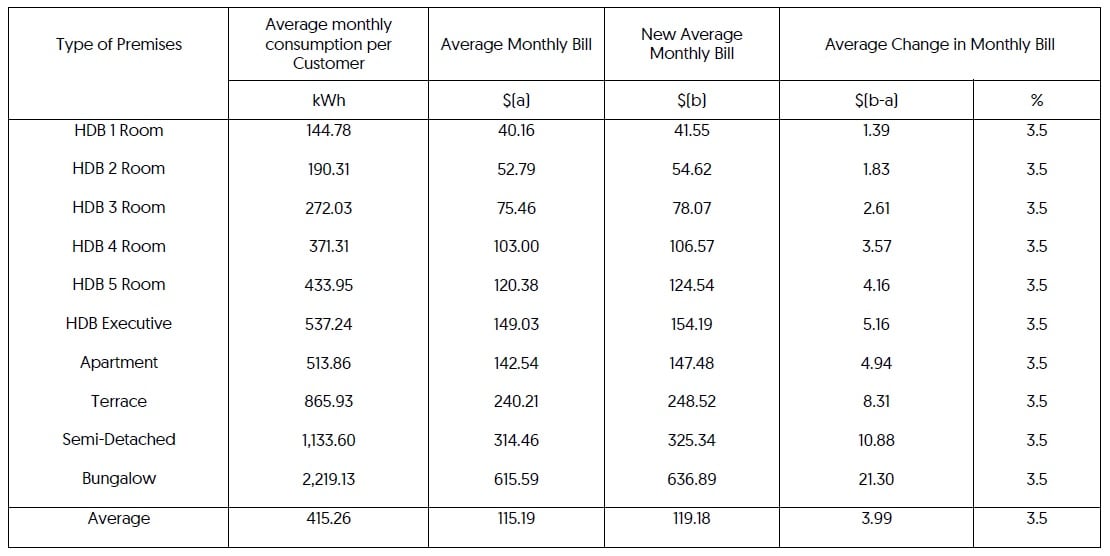Electricity and gas tariffs to go up from October to December due to higher energy costs
About 950,000 Singaporean households living in HDB flats will receive rebates from the government for utilities and service and conservancy charges in October.

File photo of HDB flats at night. (Photo: CNA/Jeremy Long)
SINGAPORE: The electricity tariff will go up by an average of 3.7 per cent from October to December, national grid operator SP Group said on Friday (Sep 29).
This translates to an increase of about 0.98 cents per kWh before Goods and Services Tax (GST).
It is the second consecutive quarter of increase, with SP Group attributing the rise in electricity tariff to higher energy costs compared with the previous quarter.
For households, the electricity tariff before GST will increase from 27.74 to 28.70 cents per kWh. The average monthly electricity bill for families living in Housing Board four-room flats will increase by S$3.57 (US$2.60) before GST.
The gas tariff, meanwhile, will increase by about 2.3 per cent to 22.42 cents per kWh, announced City Energy.

To help Singaporeans cope with rising prices, Deputy Prime Minister Lawrence Wong on Thursday announced a new S$1.1 billion (US$800 million) support package that includes cash payouts and utility bill rebates for those who are eligible.
The Finance Ministry noted on Friday that about 950,000 Singaporean households living in HDB flats will receive U-Save and service and conservancy charges (S&CC) rebates in October.
These rebates, which are disbursed in April, July, October and January each year, are part of the permanent GST Voucher scheme and the Assurance Package to help lower- to middle-income households.
As announced on Thursday, eligible households will also receive an additional S$20 per quarter of U-Save rebates from January 2024 to December 2025. The amount will be disbursed together with the regular U-Save.
"The additional U-Save rebates will on average fully offset the increase in utility bills for one- to two-room flats over the next two years, about 80 per cent for three- to four-room HDB flats, and about 65 per cent for larger flats," the Finance Ministry said.
"On average, this translates to three- to four-room HDB flats paying about S$2 more per month, and five-room and larger HDB flats paying about S$4 more per month."
Eligible households do not need to take any action to benefit from the U-Save and S&CC rebates. The U-Save rebates will be credited directly into households’ utilities accounts with SP Services, while the S&CC rebates will be credited directly into households’ accounts with their respective town councils.

SP Group, which owns and operates Singapore's electricity network, reviews the electricity tariffs every quarter based on guidelines set by the industry regulator, the Energy Market Authority (EMA).
The electricity tariff consists of four components, including energy costs paid to the generation companies, and network costs paid to SP Group to recover the cost of transporting electricity through the power grid.
There is also a market support fee paid to SP Group to recover the costs of services such as billing and meter reading, as well as a fee paid to the energy market company and power system operator to recover the costs of operating the electricity wholesale market and power system.
The energy costs component is adjusted quarterly to reflect the changes in the cost of fuel and power generation. The fuel cost is the cost of imported natural gas, which is tied to oil prices by commercial contracts.
The cost of power generation covers mainly the costs of operating the power stations, such as the manpower and maintenance costs, as well as the capital cost of the stations.

SP Group used to be the sole electricity retailer in Singapore before the move to fully liberalise Singapore's electricity retail market.
Since the nationwide roll-out of the Open Electricity Market in November 2019, all households may pick and choose electricity price plans offered by different retailers, instead of getting power solely from SP Group at the quarterly reviewed regulated tariff.
Retailers in the Open Electricity Market are either the retail arm of power generators or independent retailers which buy electricity in bulk from power generation companies in a wholesale market where prices change every 30 minutes depending on demand and supply.
Some retailers offer households fixed-price plans, with contract durations of between six and 24 months.












